Let’s Get Physical!
Let’s Get Physical is an expression that emphasizes the importance of physical exercise and activity in maintaining good health and well-being. Regular physical activity can provide numerous benefits, such as improving cardiovascular health, building muscle strength, and reducing the risk of chronic diseases. Additionally, exercise is also beneficial for mental health, as it can reduce stress and anxiety, and improve mood and cognitive function. Whether it’s hitting the gym, taking a brisk walk, or participating in a sport, physical activity can be enjoyable and rewarding. It’s important to make physical activity a part of our daily routine to ensure that we stay fit and healthy. So, let’s get physical and make exercise a priority in our lives!
Table of Contents
No Time to Read? Here’s a Snappy Summary of This Article
- Introduction: The article explains the importance of having a strong core and how core exercises can work to strengthen the core muscles. It also provides seven core workouts that can be done at home during the circuit breaker period.
- Planks: A basic but effective core exercise that involves holding a straight position on the elbows and toes for as long as possible. Planks can work the entire core, as well as the shoulders, arms, and legs.
- Body Saw: A variation of the plank that involves rocking back and forth on the elbows and toes, creating a sawing motion. Body saw can increase the challenge and intensity of the plank and target the lower abs more.
- Wheelbarrow: A partner exercise that involves one person holding the ankles of another person who walks on their hands. Wheelbarrow can work the upper body, core, and coordination of both partners.
- C-Curve: A Pilates-inspired exercise that involves sitting on the floor with the knees bent and the feet flat, then curling the spine into a C shape and holding it for a few seconds. C-Curve can work the deep core muscles and improve posture and flexibility.
- Side Bend: A simple but effective exercise that involves standing with the feet shoulder-width apart and holding a weight in one hand, then bending to the side as far as possible and returning to the starting position. Side bend can work the obliques and help sculpt the waistline.
- Plank Tap: A dynamic exercise that involves starting in a plank position on the hands and toes, then tapping one shoulder with the opposite hand and alternating sides. Plank tap can work the core, shoulders, arms, and balance.
- Leg Raise: A classic exercise that involves lying on the back with the legs straight and together, then lifting them up to a 90-degree angle and lowering them back down without touching the floor. Leg raise can work the lower abs and hip flexors.
But first, why you should get a strong core:
Having a strong core is essential for overall health and well-being. The core muscles include the abdominals, obliques, and lower back muscles, and they play a crucial role in supporting the spine and improving posture. Strengthening the core muscles can also help alleviate back pain and reduce the risk of injury during physical activity. In addition, a strong core can improve athletic performance, as it provides a stable base for movements such as running, jumping, and lifting weights. Core exercises can also help tone and define the abdominal muscles, resulting in a flatter stomach and a more aesthetically pleasing physique. Moreover, a strong core can improve balance and stability, which is especially important as we age. By working on strengthening the core muscles through exercises such as planks, sit-ups, and Russian twists, individuals can enjoy a wide range of benefits that contribute to overall health and well-being.
How should core exercises work?
Core exercises are designed to strengthen the muscles in the abdomen, lower back, and pelvis, which form the core of the body. These exercises should work by targeting these specific muscle groups and challenging them to become stronger and more resilient. Some effective core exercises include planks, crunches, sit-ups, bicycle crunches, and Russian twists. These exercises can be performed using bodyweight, resistance bands, or weights, depending on the individual’s fitness level and preferences. It’s important to start with a comfortable number of repetitions and sets and gradually increase the intensity and volume over time to avoid injury and ensure progress. When performing core exercises, it’s essential to maintain proper form and alignment to maximize the effectiveness of the exercises and avoid straining the neck or back. Core exercises should be performed at least two to three times per week to see results and improve overall core strength, stability, and function.
Like an engine, your core has several muscle groups that help you move:
- The rectus abdominis, what we often refer to as ‘abs’
- The transverse abdominis, the internal core muscle that wraps around the side of your waist and spine
- And the internal and external obliques, the muscles on both sides of the abdomen
Since every workout uses those muscles in different combinations, the most effective exercises work all of those muscles simultaneously. By working the core muscles all at once, you’re maintaining the balance of the core muscles. That not only improves performance but prevents injuries too.
So, with a better understanding of your core muscles, let’s get to work!
Read Also:
1. Planks
I’m sure this is where some of us want to wriggle out of (me). As you do planks, you’re working your core, your hamstrings, and your glutes. By training those muscles, you’re not only building your strength and endurance but improving your balance and supports better posture as well.
The steps:
- Place your palms on the floor, or your forearms for a better workout. Your elbows should be directly below your shoulders. Keep your palms facing forwards, so your arms are parallel with each other.
- Extend your legs, and just place your toes on the floor. Now, your body should form a straight line from your shoulders all the way to your heels.
- Hold your core, and work your glutes and quads. You should tuck your tailbone, but only a little so your lower back remains straight.
- You should keep a straight line; check if your hips are dropping to the floor, or if your butt is heading to the ceiling.
- Keep your neck in a neutral position, so don’t lower your head. Keep your gaze on your hands.
- Hold for 1 minute at first. You can increase the duration as you get stronger.

2. Body Saw
When you’re doing the body saw, you’re basically sawing back and forth from your plank position. As with the plank, you have to tuck your tailbone and keep your hips up and don’t let it drop to the floor.
The steps:
- Place your toes on a towel, and get into a plank either on your palms or your forearms. Remember to keep your elbows directly below your shoulders, and your palms facing forwards to keep your arms parallel.
- Push your palms and forearms, so you can slide backwards. Try and move as far backwards as you can while keeping your core engaged.
- Then pull your body forward with your arms so you can return to the original position, and repeat the core exercise.
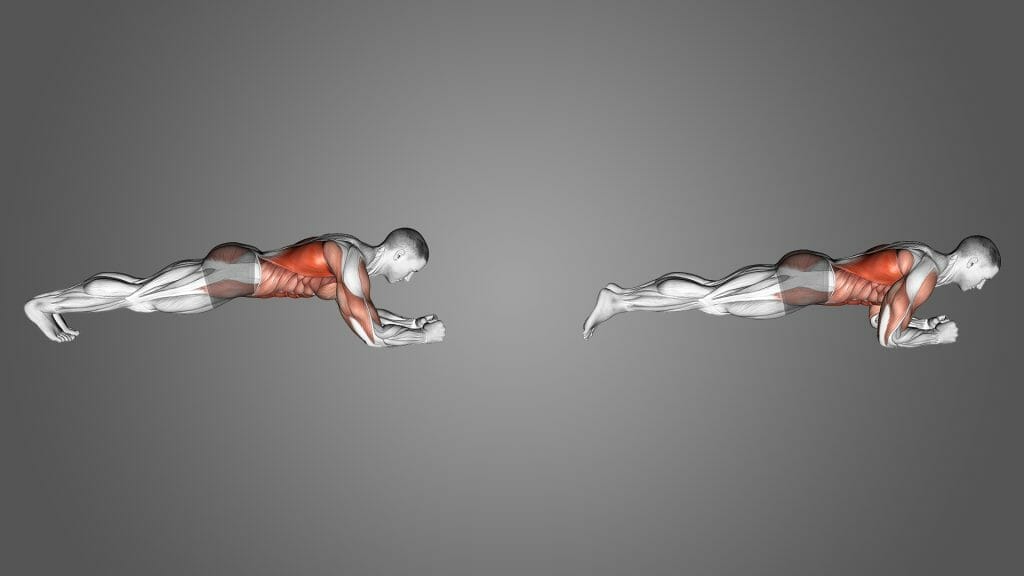
3. Wheelbarrow
Here’s a core workout that’s a little more difficult, since you’ll be utilising your shoulder stabiliser muscles as well. But when you’re doing the wheelbarrow, you have to be mindful; you might be in danger of straining your lower back. You can just use a tower or the towel if you don’t have gliding discs or the old school ab roller.
The steps:
- Get on all fours, and get your towel under your hand. Keep your back flat by engaging your core and tucking your tailbone in (just like in the plank).
- Slowly push your hands to the front. Bear in mind that you have to keep your arms straight.
- While keeping your torso in the plank position, try to glide as far forward as you can.
- Lastly, get back to the original position by pressing into the floor and pulling your arms back.

4. C-Curve
This core exercise just uses the most intense part of the sit-up. You’re actually strengthening your abs as you hold them with constant tension. If you’re worried about straining your back, you could switch to the C-Curve instead, where your spine is lengthened because you’re keeping your tailbone tucked.
The steps:
- Sit on your tailbone on the floor. Your knees should be bent and your feet should be planted on the floor.
- Round your spine and tuck your tailbone in. Lower your torso as if you’re lowering it after you finish a set of sit-ups.
- About halfway before you reach the floor, stop. Hold and engage your core and your quads.
- You can let your hands hold onto the area just above your knees. If you want more of a challenge, you can just hold your arms out in front of you.
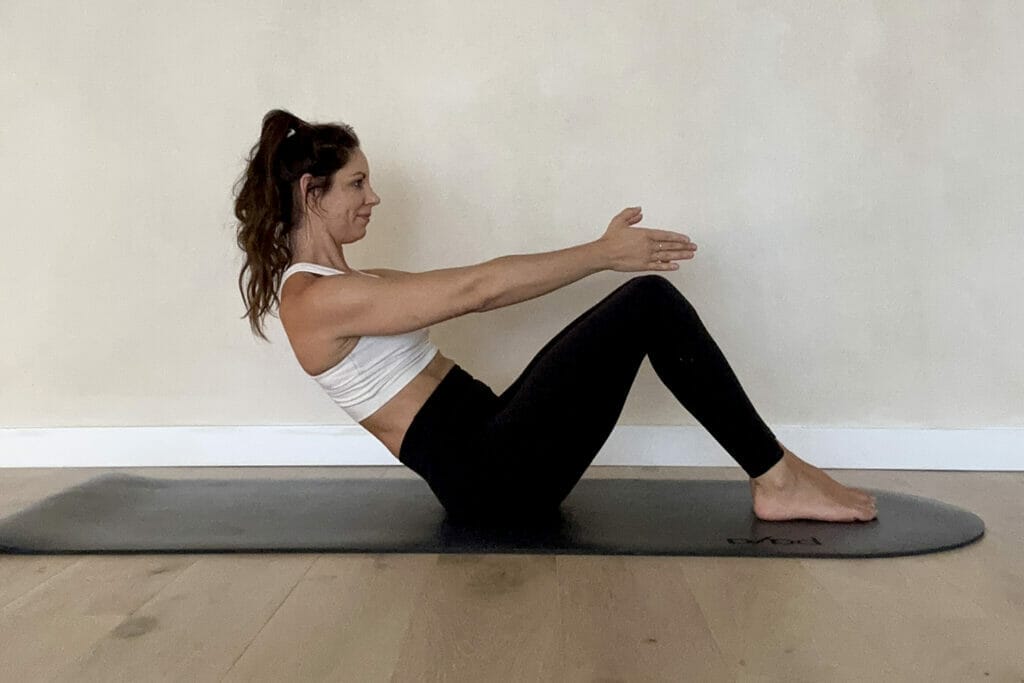
5. Side Bend
It’s one of the well-rounded core workouts out there. The side bend pushes you to work not only your obliques and core muscles but your arms and back too. If you do it right, you’ll probably feel the burn not long after your first rep.
The steps:
- Start your rep with a side plank: place your right palm on the floor, right below your right shoulder. Stagger your left feet in front of your right feet. For a bigger burn, you can even stack your left foot on top of your right. You can just let your left arm hang on your left.
- Dip your hips towards the floor and lift it up. Keep your core and butt engaged.
- That’s one rep. Then repeat your reps on your left side too.
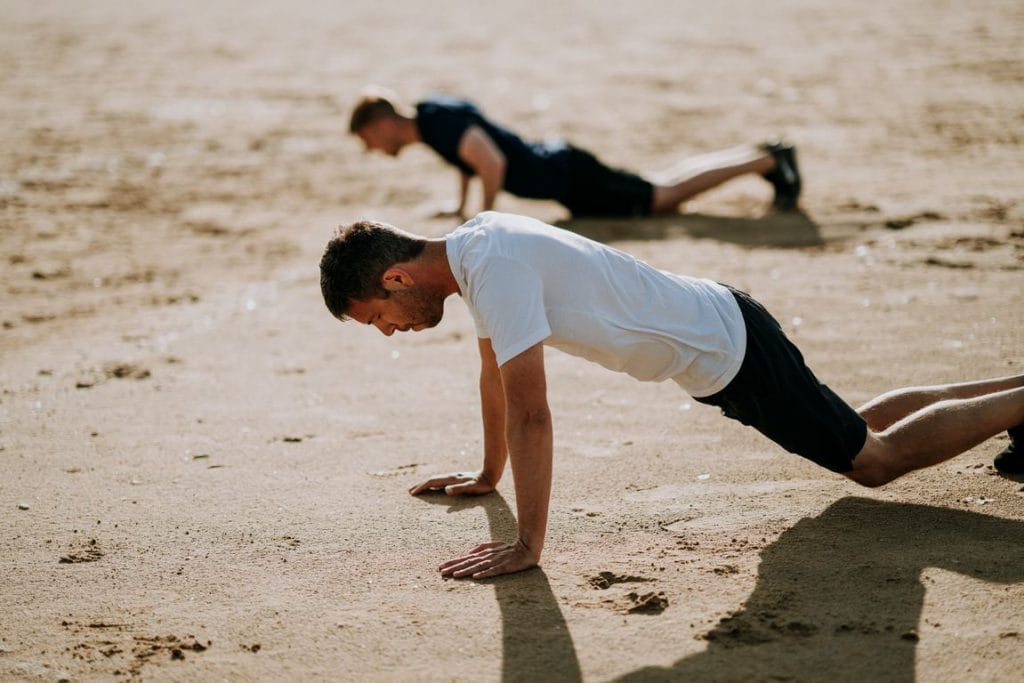
6. Plank Tap
Here’s another way to ramp up the burn for your planks. The trick? You need to do this without rocking your hips from side to side.
The steps:
- Begin with a plan: keep your palms flat on the floor, and your hands shoulder-width apart. Remember to keep your shoulders stacked directly over your hands.
- While holding your hips steady, tap your right hand to your left shoulder and vice-versa.
- You have to avoid rocking your hips from side to side. Keep your engagement with your core and glutes.
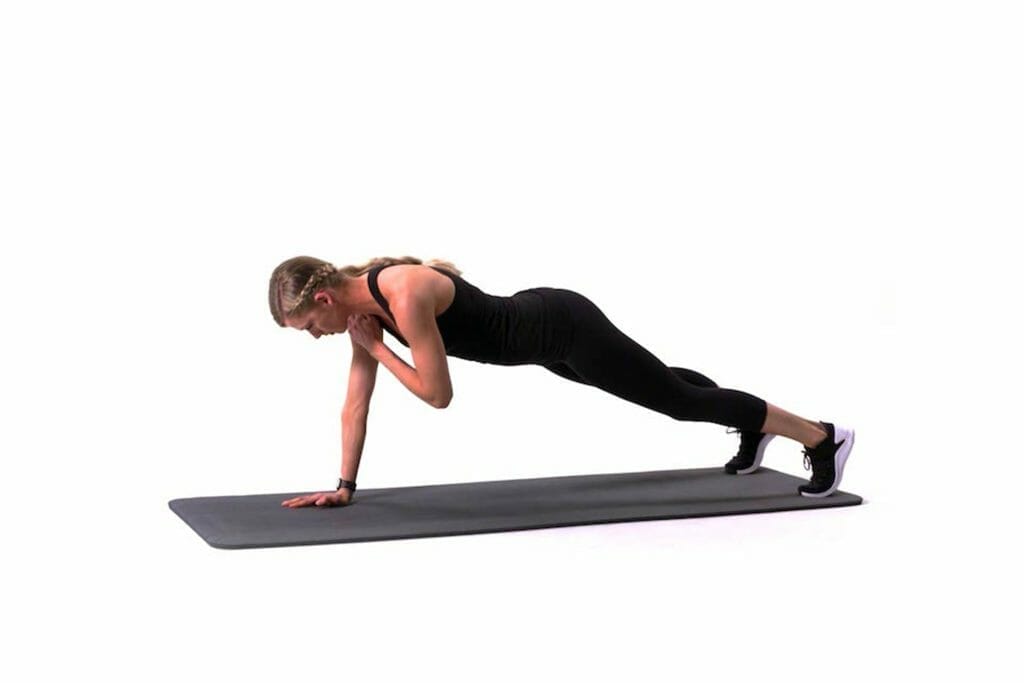
7. Leg Raise
If you want to target your lower abs, try a few reps of this core exercise to feel the burn. It’s great when you’re sitting at home all day because it helps strengthen and add flexibility in your hip flexors. By increasing your hip mobility, you’ll be able to be even lighter on your feet once you come out of the Circuit Breaker.
The steps:
- Lie straight on the floor, you can either keep your hands at your sides. Or tuck them underneath your hips if you need extra support.
- Raise your legs slowly until your feet are facing the ceiling. Keep your legs together and lengthened.
- Then slowly lower your legs back to the floor, but don’t let them touch the floor. Keep your legs just a few centimetres off the floor. And then you start over.
- When you do leg raises, you have to keep your lower back flat on the floor so you’re not straining your lower back. If you’re having trouble with that, you don’t need to lower your legs as far.
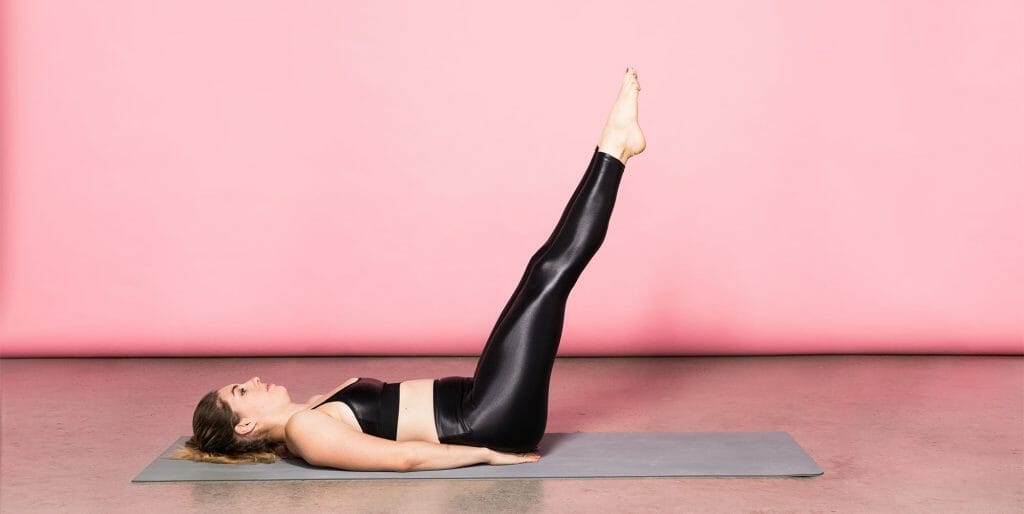
Conclusion
IThe article shows how to keep fit and healthy during the circuit breaker period by doing core workouts at home. Core workouts are exercises that target the muscles in the abdomen, lower back, and pelvis, which support the spine and improve posture. The article provides seven core workouts that can be done with minimal equipment and space, such as planks, body saw, wheelbarrow, C-curve, side bend, plank tap, and leg raise. These workouts can strengthen the core muscles and provide various benefits, such as reducing back pain, improving athletic performance, toning the abdominal muscles, and enhancing balance and stability. The article also explains how core exercises should work and why having a strong core is important for overall health and well-being. The article encourages readers to try these core workouts at home and make physical activity a part of their daily routine.
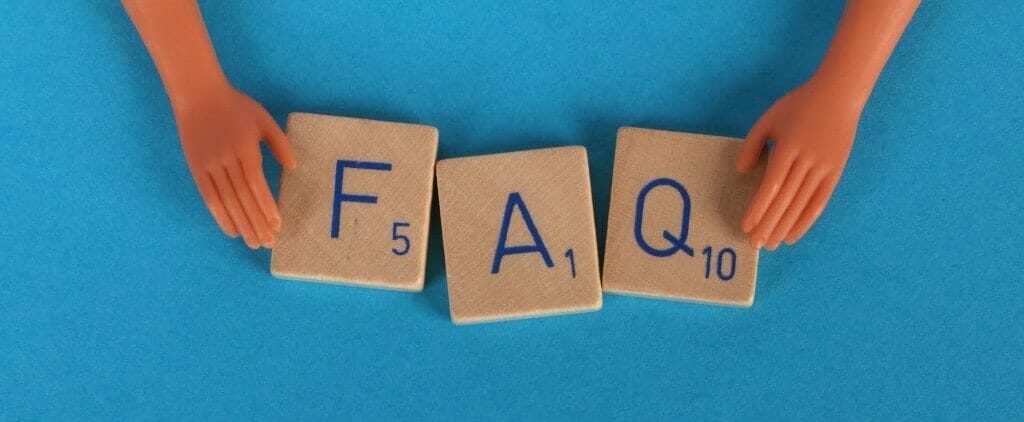
Frequently Asked Questions (FAQ)
Q: What are the benefits of having a strong core and how can core exercises help?
A: Having a strong core is essential for overall health and well-being. The core muscles include the abdominals, obliques, and lower back muscles, and they play a crucial role in supporting the spine and improving posture. Strengthening the core muscles can also help alleviate back pain and reduce the risk of injury during physical activity. In addition, a strong core can improve athletic performance, as it provides a stable base for movements such as running, jumping, and lifting weights. Core exercises can also help tone and define the abdominal muscles, resulting in a flatter stomach and a more aesthetically pleasing physique. Moreover, a strong core can improve balance and stability, which is especially important as we age. Core exercises can help strengthen the core muscles by targeting them specifically and challenging them to become stronger and more resilient.
Q: How often should I do core exercises and how long should I hold each position?
A: Core exercises should be done at least two to three times per week to see results and improve overall core strength, stability, and function. The duration of each exercise depends on the individual’s ability and endurance, but a general guideline is to hold each position for 30 seconds to one minute, or until fatigue sets in. It’s important to start with a comfortable number of repetitions and sets and gradually increase them over time to avoid injury and ensure progress.
Q: How can I make sure that I am doing core exercises correctly and safely?
A: When doing core exercises, it’s essential to maintain proper form and alignment to maximize the effectiveness of the exercises and avoid straining the neck or back. Some tips to ensure proper form and alignment are:
- Keep the spine neutral and avoid arching or rounding the back.
- Engage the core muscles by drawing the navel towards the spine and bracing the abdomen.
- Breathe normally and avoid holding the breath.
- Align the head, neck, shoulders, hips, knees, and ankles in a straight line.
- Avoid sagging or lifting the hips too high when doing planks or body saws.
- Keep the elbows directly under the shoulders when doing planks or body saws.
- Keep the legs straight and together when doing leg raises or plank taps.
- Keep the knees bent at 90 degrees when doing C-curves or side bends.

Tropika Club Magazine – Tropika Club Magazine is a Singapore-based publication that features articles on a wide range of topics with a focus on local businesses and content for the region. The magazine emphasizes supporting local businesses through its #SupportLocal initiative, which includes coverage of everything from neighborhood hawker stalls to aesthetic clinics in town. In addition to highlighting local businesses, Tropika Club Magazine also covers a variety of local content, including beauty, lifestyle, places, eats, and what’s on in Singapore and the Asia Pacific region.
Tropika Club Deals – Tropika Club Deals is a leading online deals and voucher shopping site in Singapore, offering amazing discounts on beauty, wellness, and fitness products and services. It’s the perfect platform for customers who want to discover the best deals without having to commit to a specific appointment date and time. These deals are available at major beauty stores, facial salons, hair salons, and other brands in Singapore, with no minimum spend required. Choose from guaranteed discounted deals in the categories of hairstyling, hair removal, facial & aesthetics, body slimming, brows & lashes, nails & makeup, massage & spa or fitness & wellness. Tropika Club Deals is also ideal for customers who want to buy vouchers as gifts or to use for the future. So whether you’re looking to save money on your next haircut or want to treat yourself to a relaxing massage, Tropika Club Deals has got you covered with the best voucher and coupon deals in Singapore!



